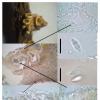
18-12-2025 17:23
 Bruno Coué
Bruno Coué
Bonjour,je serais heureux d'avoir votre avis sur c

18-12-2025 21:17
Pol DebaenstThe identification took me to Byssonectria deformi

18-12-2025 18:07
Margot en Geert VullingsThese plumes were found on rotten wood.They strong

17-12-2025 18:35
 Michel Hairaud
Michel Hairaud
Bonjour à tous/Hi to everyone I am passing along

15-12-2025 15:48
 Danny Newman
Danny Newman
Melanospora cf. lagenaria on old, rotting, fallen

15-12-2025 15:54
 Johan Boonefaes
Johan Boonefaes
Unknown anamorph found on the ground in coastal sa

15-12-2025 21:11
 Hardware Tony
Hardware Tony
Small clavate hairs, negative croziers and IKI bb

15-12-2025 07:09
 Danny Newman
Danny Newman
indet. Rutstroemiaceae sp. on unk. fallen leavesMc
Stromatic cupulate coelomycete from Belize
Joanne Taylor,
07-09-2017 00:57
An interesting stromatic cupulate coelomycete was collected in Belize. it was growing on a seedling tree, on the stem and whether it was pathogenic or not, was unlcear. The description is below. It is very distinctive so surely must be described?
Creamy white stroma on host tissue (approximately 5mm), unclear whether it is bursting out of cuticle or superficial. Forming several cupulate conidiomata, often with stromatic short fat finger like projections.
In section hymenium can be convoluted and folded while appearing flat from above, orange coloured. The excipulum consists of textura intricata cells which are hyaline, thick walled with a narrow lumen, have crystalline encrustations and vary little from the stromatic tissue except in the upper margin where they are appear in a clear matrix.
The conidiogenous cells line the hymenium and are densely packed in some sort of matrix and will not separate even after treatment with 10% KOH. Conidiophores cylindrical/filiform, branched? or not, producing cylindrical filiform conidiogenous cells with small collarettes and are possibly percurrent with annelations.
Conidia are hyaline, fusiform with a truncate base and an apiculate apex, three septate with a germslit particularly visible in KOH (9-10 x 3 um).

